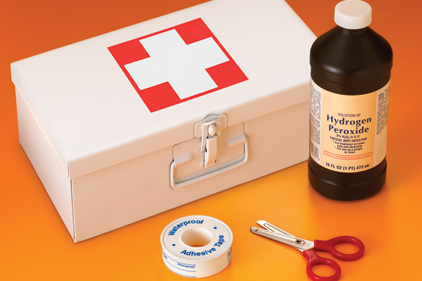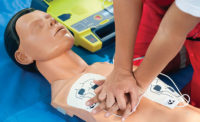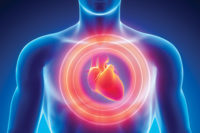AEDs and liability risks

Verdugo v. Target asks: “In what circumstances, if ever, does the common law duty of a commercial property owner to provide emergency first aid to invitees require the availability of an AED for cases of sudden cardiac arrest?” Survivors of a woman who died of sudden cardiac arrest while shopping in Target’s Pico Rivera store near Los Angeles issued the legal challenge, with a court decision expected in 2014.
The founder and president of Readiness Systems, Richard A. Lazar helps organizations create and maintain operationally ready and risk-managed AED programs. He said the Verdugo v. Target case raises the fundamental question of whether a “common law duty” requires certain types of businesses to have AEDs. The California Supreme Court may say there is no such duty, or it may determine that a jury should decide.
If the court says this question should be put before a jury, then the concepts of “community expectations” and “reasonableness” will be considered to determine what the “standard of care” is in this particular circumstance. Lawyers for the Verdugo family will attempt to show the benefits of early defibrillation and the ease-of-use and low cost of AEDs, Lazar said. Attorneys will then argue that workers, customers and others on the premises reasonably expect AEDs to be available, he added.
|
For more information about AED's |
Lazar believes if the California Supreme Court allows this case and subsequent ones to go to jury, safety managers will have to more carefully consider the risks of not having AED programs. The consequences of going without AEDs may involve civil lawsuits if a visitor dies from sudden cardiac arrest or workers’ compensation claims if an employee suffers the same fate. Lazar said this decision could tip the scales in a way that increases liability risks for businesses that don’t have AEDs. Safety managers should keep a close eye on this case, he added.
People problems, not device problems
The Food and Drug Administration recently announced its intention to impose stricter regulations on AED providers, citing concerns about recalls and manufacturing problems associated with some devices. This news has given some workplace safety managers the impression that AEDs may be unreliable in a rescue situation.
However, on his blog, Lazar cited data showing that AEDs work as intended more than 99.5 percent of the time. When they don’t work, a human rather than a mechanical factor is often the cause, according to a recent University of Alabama at Birmingham study that evaluated five years of data from Alabama communities involved in the National Institutes of Health Public Access Defibrillation (PAD) trial. These data showed expired batteries, expired defibrillation pads, and unresolved maintenance alerts as significant factors causing failed AED rescues. “These are people problems, not device problems,” he wrote.
Workplaces can learn from U.S. communities that have achieved outstanding results from AED programs. Any workplace can replicate the basic elements of a successful community approach by having AEDs readily available and employee response teams trained in CPR and AED use.
Immediate treatment
Even the fastest EMS team will take several minutes to arrive at a workplace, but having an AED on site enables virtually immediate response and treatment. That’s important because up to 90 percent of sudden cardiac arrest victims who receive a defibrillating shock treatment within two minutes survive. Survival chances decrease with each passing minute. By 10 minutes, most victims die.
A Johns Hopkins study of more than 13,000 out-of-hospital cardiac arrests published in the Journal of the American College of Cardiology showed that survival increases from a national average of about 8 percent to 38 percent when victims receive AED treatment before EMS arrives.
Proper deployment
“There are many risks companies manage every day; (sudden cardiac arrest) is just another one,” Lazar said. “But it’s more complicated and it’s an area that most risk and operations managers are not familiar with.”
Consider what kind and how many AEDs are deployed to assure rapid response. A common rule of thumb is the 90-second rule — an AED must be within a 90-second walk from anywhere in a business facility. Technological innovations have made AEDs even easier to use. The Johns Hopkins study showed that non-medical users of AEDs achieved the highest survival rate — 40 percent — higher than both healthcare workers (16 percent) and police (13 percent) — simply because the non-medical users arrived on the scene earlier and were able to use AEDs successfully.
Video and text instructions for rescuers make AEDs easier to use. Training modules embedded into AEDs help workplace teams prepare for a sudden cardiac arrest response, and maintenance reminders make it easier to keep batteries and defibrillation pads up to date.
Fast access is everything
A successful AED program takes initiative and wanting to do the right thing. And what goes around comes around. Harold Liberatore led a fundraising campaign to buy three AEDs for the Lincoln Park (N.J) Police Department, according to an article in Chilton (Hospital) Magazine. One day, Liberatore was waiting for a stop light in his car, when he slumped over his steering wheel, a victim of sudden cardiac arrest.
An off-duty police officer driving behind Liberatore called for assistance, and an officer from the Lincoln Park Police Department arrived first on the scene with an AED in the trunk of his vehicle — possibly one of the AEDs donated by Liberatore himself. He was revived by the AED, taken to Chilton Hospital for further treatment, and now has an excellent prognosis. He set events in motion that eventually saved his own life. Workplace safety teams have the ability to do the same.
Looking for a reprint of this article?
From high-res PDFs to custom plaques, order your copy today!





